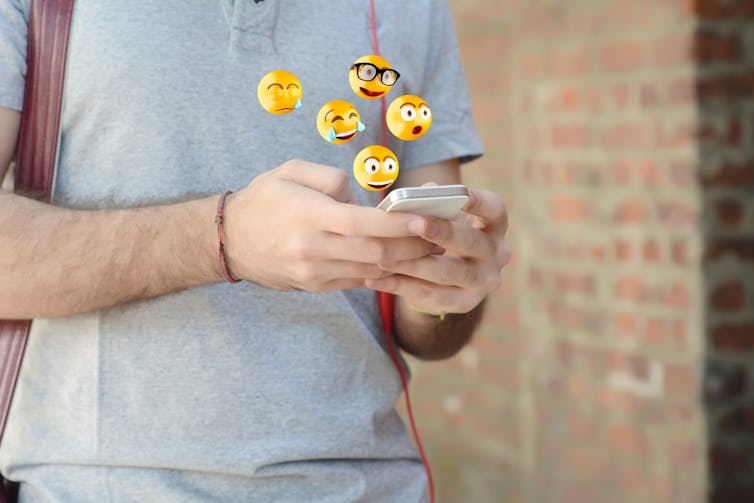The X in Text
Putting the X in text: warm wishes or a kiss-off?

Do you sign off texts and emails with an x? Have you ever thought what that x – shorthand for a kiss – means to you or the person who has sent it to you? It’s said that the liberal use of x in electronic correspondence, whether personal or professional, is feminising the workplace – and Labour MP Jess Phillips was told off for being unprofessional by a judge a couple of years ago for signing off an email to a constituent with an x. So how did we arrive at a situation where everybody gets one at the end of nearly every sentence we type?
Part of our answer is really simple – the x in correspondence conveys a special kind of empathy for the recipient. In a world where uppercase letters read like SHOUTING and where emojis are ambiguous, every element of a text message is easily misunderstood. The x serves as a catch-all device, telling your reader that all is well in your relationship.
The ubiquitous x can be applied to friendship, romantic, or even professional relationships when messaging. It is so versatile, revealing interest, affection and a general kind of togetherness which, if face to face, would be equivalent to some kind of non-verbal body language – a head tilt, or a sympathetic nod to show agreement and understanding. The x shows that you are in this together and that you seek to continue the conversation in a spirit of mutual and even jovial appreciation.
However, this still doesn’t fully explain why it is an x that has come to wield such power, or why it feels so essential to include one. After all, it could be – and sometimes is – a different symbol: an emoji perhaps, or a simple smiley face like this: :). Nor does it tell us about the journey taken by the x in becoming this multifaceted symbol.

Making your mark
History tells us that the x has a long pedigree. In the middle ages, handwritten letters would end with an + to signify the Christian symbol of Christ. With most people being illiterate, a cross was deemed to be sufficiently accessible to verify identity. What’s more, there is evidence of such rituals of signing documentation to be accompanied by a physical kiss being given to the paper, as one might kiss a cross if of certain religious persuasions.
But, this still leaves a big gap between then and now. What happened at the beginnings of the digital revolution that explains this progressive encroachment into all of our correspondence, turning every message into its own letter? Equally, why did the x remain, while other elements of letter writing disappeared, such as writing: “Dear [name]”, or “from [name]” at the start and end of correspondence. We nearly never do this now when sending texts, because messaging has become an endless letter, a conversation that is always left open, to be picked up again at a later stage. It isn’t difficult to imagine that the cross at the end of letters evolved into the x just as words like “goodbye”, evolved out of “God be with you”.
Kissing culture
Yet, for today’s generation, the connection behind the x is likely to be completely lost – it is simply some kind of kiss and, just like a cross, using it could land you in big trouble. After all, the kiss is remarkably culturally specific and an x can mean something very different – or nothing at all in a different language. For instance, in Spanish, x is short for “por”, meaning “for”. Equally, a kiss in one culture means something different in another and, in some cultures, there is no kissing at all. There is also a gendered politics to a kiss, which can make it a highly risky undertaking to send, especially in professional settings.

At the same time, the x can be a way of allowing somebody to express themselves physically without the pressure of actually having to touch somebody. Indeed, this is one of the web’s most amazing features; it can liberate us from the constraints of social conventions and provide a space for relating to others differently – a perspective that researchers have outlined since its inception.
There may be many people who sign off with an x who would not think of kissing the person when face to face, but feel comfortable expressing such affection through a symbol. At a time when the world wide web’s inventor, Sir Tim Berners Lee, has called for more love online, this is surely a good thing.
So, while seemingly one of the most uncomplicated things we do when messaging, the x in texts has far wider implications than perhaps we first thought. A good rule may be to only send an x to people who would be comfortable with you kissing them face to face. Would you actually kiss that person, if they were in front of you? If not, then perhaps drop the x.![]()
Andy Miah, Chair in Science Communication & Future Media, University of Salford
This article is republished from The Conversation under a Creative Commons license. Read the original article.
